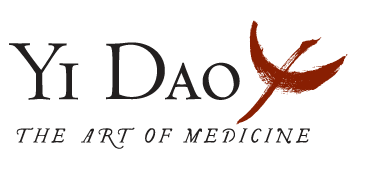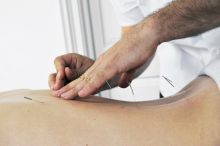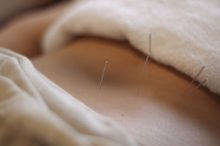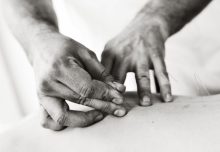“Just how does it work???”
This is a very interesting question that a great number of patients have asked us over the years. The idea that the insertion of hair-thin needles at particular points of the human body, often eliciting no sensation at all, will create a healing response is very alien to our usual system of thought. It is therefore normal for any inquisitive mind to ask: how does it work?
A scientific approach
This is a fascinating area of study, and there is currently a great deal of research and debate being carried out in order to decipher in scientific terms what specifically happens during an acupuncture treatment. Recently it has been demonstrated that acupuncture needling has significant effects on multiple physiological systems. In particular, it has been shown:
- to have measurable effects in alleviating pain of multiple origins
- to regulate the hormonal system
- to regulate the central and the peripheral nervous system
- to relax the vascular system and increase blood flow, for example to the heart and brain
(see example references below)
However, its full effects are still far from being understood in conventional terms, and there certainly isn’t a single unifying theory that explains the vast number of effects that acupuncture has. Moreover, given the complexity of the human body and the great number of acupuncture points at different locations, it is unlikely that there ever will be a simple Western explanation of it.
A traditional approach
The type of acupuncture we offer at Yi Dao is based on Traditional Chinese Medicine (TCM), a complete system of medicine that has been tested and refined in China for thousands of years. It is a complex and internally very coherent system, that accurately describes many of the processes of the human body in significant detail. Although its concepts cannot always be directly correlated to conventional medical understanding, we find that using this system to inform treatment and choose acupuncture points consistently gives good results.
Increasingly recognised and accepted
Although its mechanisms are not completely understood, research into the effectiveness of acupuncture is proving conclusive. Acupuncture is now included in the NICE guidelines as a recommended treatment for certain conditions, for example tension-type headaches. It is increasingly gaining recognition and acceptance into our Western healthcare systems, and is now available in various NHS treatment settings, from pain clinics to labour wards to drug addiction centres.
References
- Hui, K. K. S., Liu, J., Makris, N., Gollub, R. L., Chen, A. J. W., Moore, C. I., et al. (2000). Acupuncture Modulates the Limbic System and Subcortical Gray Structures of the Human Brain: Evidence From fMRI Studies in Normal Subjects, Human Brain Mapping, 9, 13–25.
- Napadow, V., Makris, N., Liu, J., Kettner, N. W., Kwong, K. K., & Hui, K. K. S. (2005). Acupuncture on the Human Brain as Measured by fMRI. Human Brain Mapping. 24, 193-205.
- Melchart, D., Streng, A., Hoppe, A., Brinkhaus, B., Witt, C., Wagenpfeil, S., et al, (2005). Acupuncture in patients with tension-type headache: randomised controlled trial. [Electronic version]. British Medical Journal, 331, 376-382. Sandberg, M., Larsson, B., Lindberg, L. G., & Gerdle, B., (2005). Different patterns of blood flow response in the trapezius muscle following needle stimulation (acupuncture) between healthy subjects and patients with fibromyalgia and work-related trapezius myalgia. European Journal of Pain, 9, 497–510.
- Haake, M., Muller, H., H., Schade-Brittinger, C., Prinz, H., Basler, H., Streitberger, K. et al, (2007). German acupuncture trials (GERAC) for chronic low back pain: randomized, multicenter, blinded, parallel-group trial with three groups. Archives of Internal Medicine, 167,1892–1898.



